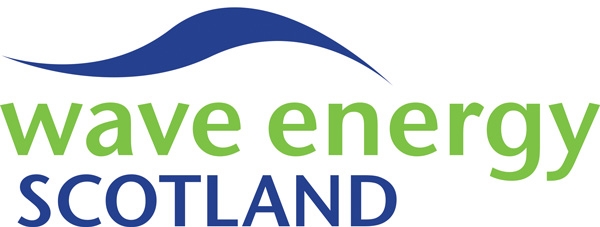Overview
Aquamarine Power Ltd (APL) was a wave energy company responsible for developing a wave energy converter called Oyster. The Oyster system consisted of a Wave Energy Converter (WEC) located in shallow water close to the shore, with a bottom-hinged flap which oscillated due to wave action.
APL deployed a full-scale 315 kW Oyster 1 system at the European Marine Energy Centre (EMEC) in August 2009, followed by a second generation machine rated at 800kW, Oyster 800, in August 2011. Oyster 800 utilised double acting pistons on each side of the WEC which pumped water through a high pressure pipeline back to shore, where high pressure water drove a Pelton wheel turbine connected to an electrical generator. The flow from the Pelton wheel discharged to a header tank and returned to the WEC via a low pressure return pipeline.
APL ceased trading in November 2015, and the intellectual property was acquired by Wave Energy Scotland (WES), who propose to share relevant documents and information acquired with developers in the WES programme and the wider sector.
The documents included here cover historic reports and procedures produced by Aquamarine Power Ltd to support the development, deployment and testing of the 315kW Oyster 1 OWSC WEC. They are now being shared by WES to support other WEC developers who may be facing similar issues and challenges.
Further documents may continue to be added to this collection over time.
Surface Coating/SGI Friction Testing
An investigation into the static and dynamic coefficient of friction and wear of a range of candidate materials, immersed in synthetic sea water (ASTM D1141-98) using the Plint TE77 reciprocating tribometer, to assess their suitability as a material solution in a real seawater environment was completed by nCATS on behalf of Aquamarine Power in 2014.
This was completed as part of the research into a mechanical connector, which was a proposed connection between the Oyster wave power device and a base foundation. The connector was based on a series of tapered bearing pads, permanently submerged in seawater and supported by laminated elastomeric components.
Tribological tests were completed to assess the static and dynamic friction that would be experienced between various surface coatings applied to the bearing pads at representative contact pressures of 20 MPa (nominal) and 40 MPa (extreme). In addition, testing was completed using castings made from spheroidal graphite iron (SGI) to determine an approximate value for the coefficient of friction at an SGI – SGI interface.
A summary report and the supporting test results are supplied.
Monitoring Programme
June 2009
Under the conditions of the necessary licences granted for the installation and testing of Oyster 1 at the Billia Croo test site at EMEC on Orkney, Aquamarine Power was required to produce an environmental monitoring programme that would be followed during installation and operations.
With assistance from their selected Environmental Monitoring Contractor, the environmental monitoring programme was outlined and covers the following areas:
- Marine Mammal Observation
- Underwater Noise Monitoring
- Seabed Impact Assessment
NOTE: This report is originally from June 2009, and the information and recommendations included may now be superseded. WES does not assume any liability with respect to use of or damages resulting from the use of any information disclosed in this document
The document is being shared by WES to provide further monitoring information from past wave/tidal projects, which can contribute to the gathering of available monitoring information and link to the Tethys Environmental Monitoring Knowledge Base. This will interface with a Discoverability Matrix that is intended to be used as a tool for regulators, developers, etc. to support consenting for future projects.
Flap Shape Selection
August 2011
This short technical note documents the results from tank testing of different concepts for the flap design of Aquamarine Power's 2nd full-scale WEC system, the Oyster 2B device (latterly known as Oyster 801), alongside relevant conceptual design studies that collectively justified the selection of which flap geometry should be pursued during the FEED phase of this project.
The selected flap design continued to evolve and be optimised following the production of this review document.
The main purpose of sharing this report now is to highlight the different shapes and concepts considered, and to provide information on why many of these concepts were discarded.
Foundation Loads and Performance of Different Flap Widths
November 2008
This document reports on the foundation loads and performance results obtained from tank test experiments of a 40th scale Oyster device of varying width performed at Queen's University Belfast.
Four (full scale) flap widths were investigated of 9m, 12m, 18m and 24m. For each flap width, the remaining (full scale) dimensions are as follows:
- Flap thickness = 1.8m
- Flap height = 10.58m
- Hinge height = 4m
- Water depth = 13m
The information in this document primarily reports the results of the experiment. However, some issues relating to the behaviour of the model device and experimental events are discussed so that the results are interpreted correctly. Calibration of the foundation load rig was completed prior to these experiments, and this process along with the resulting accuracy is reported elsewhere.
Results from performance tests show that the power captured and the capture factor increase with ever increasing flap width. Optimising and/or sophisticated damping also is shown to offer a significant improvement in performance. The foundation loads measured during the tests show that the load per meter flap width in almost all degrees of freedom increase in magnitude as the flap gets wider. A greater understanding of the cause of extreme foundation loads is required to strengthen the quality of estimations from extrapolations.

